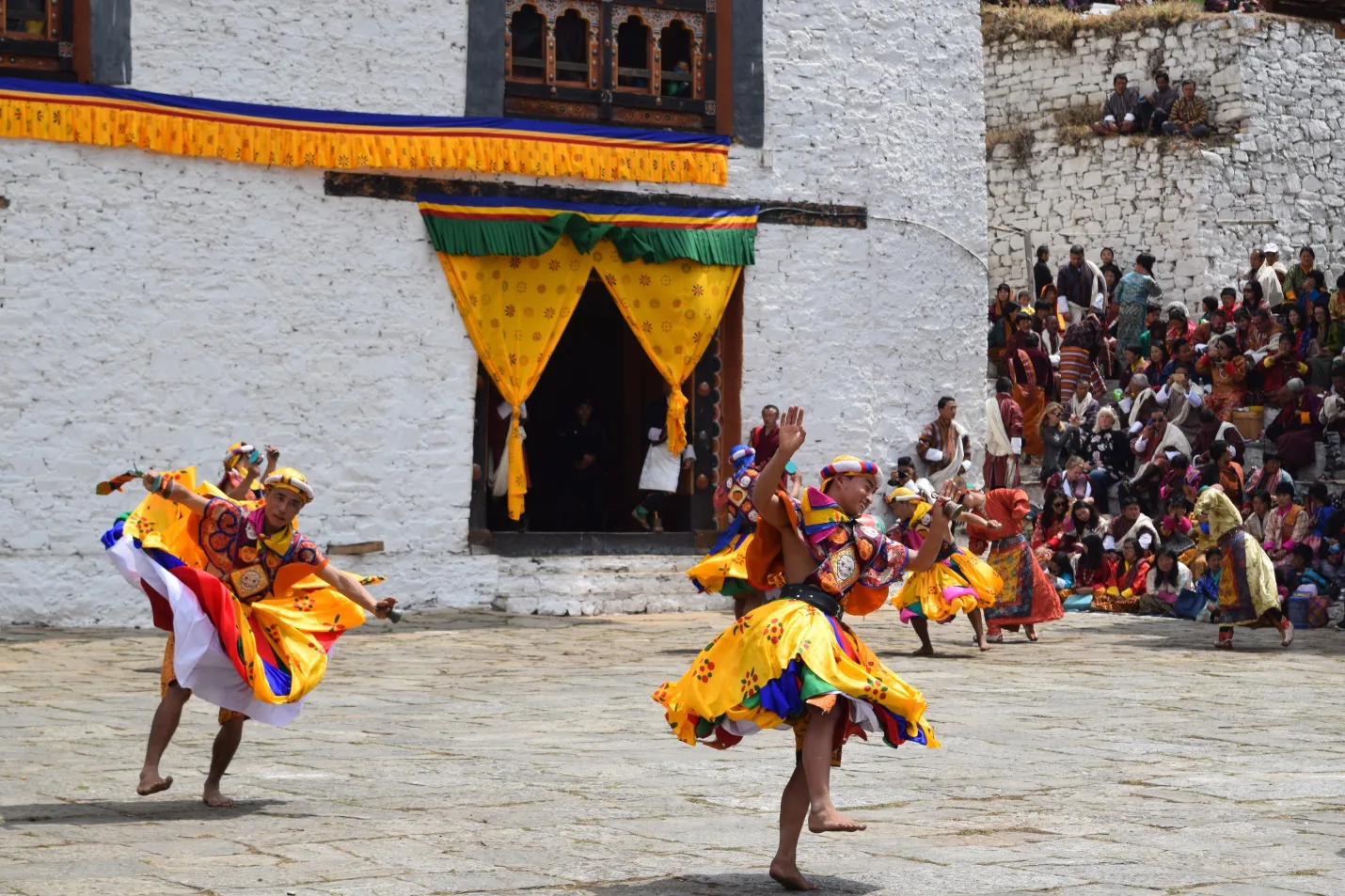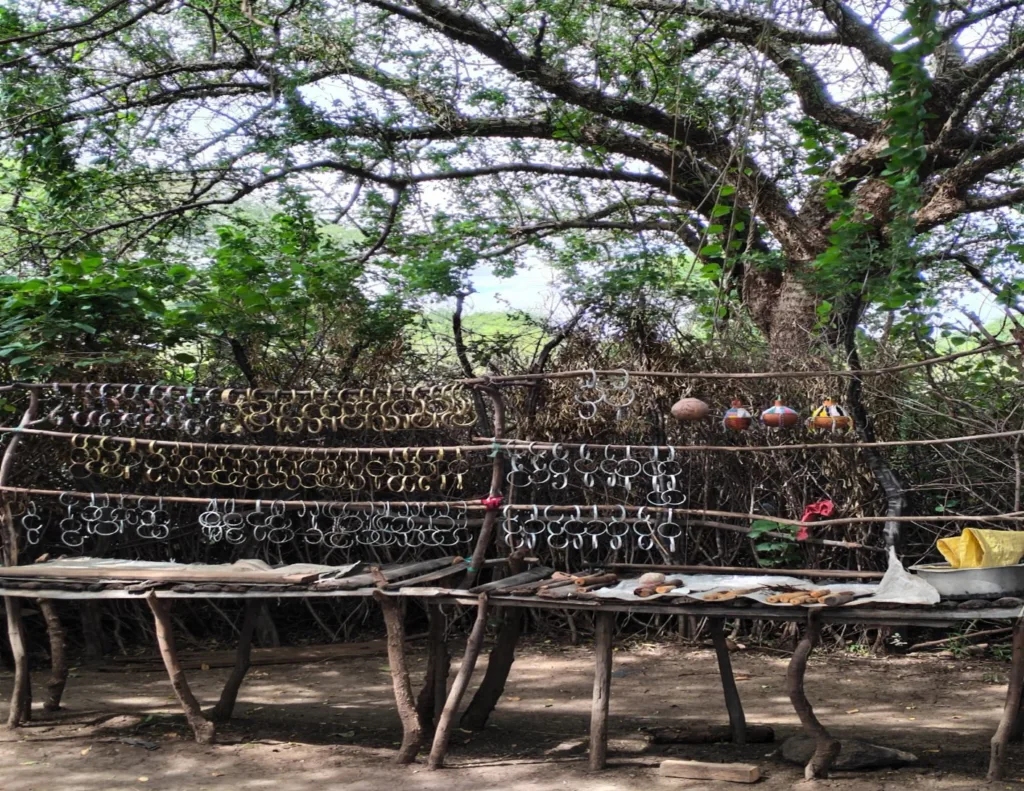Bhutanese Festivities
Festivals (called tsechus) are extremely important aspects of life in Bhutan. Almost every dzongkhag (district) in the country hosts their own festival once a year, and the ones in Paro and Thimphu are huge tourist attractions and draw for thousands of people across the country.
We had just come home from our expedition in Bumthang, arriving back to Paro on the second day of the Paro tsechu. The town was packed – there were people everywhere in stunningly beautiful ghos and kiras (the national dress), and impromptu markets and food stalls were popped up on any spare piece of grass in town. This is our first tsechu in Paro, and we were so excited to see the dances.

Some of the dancers’ vibrant costumes fan out as they twirl around the dance-grounds. Photo courtesy of Greg Francois
Not only are tsechus popular forms of entertainment, but they also hold much religious significance. The sacred dances and rituals are believed to have many benefits for the performers and observers. For instance, it is thought that by attending the performance one is given immeasurable blessings and insight on how to awaken from ignorance.
One of our favorite memories from the tsechu took place on the final day. On this day we woke up at 3:30 am to view the amazing embroidered tapestry of Guru Rinpoche, called a thangkha. This particular thangkha is thought to be one of the most precious in Bhutan and viewing it is considered one of the most sacred blessings one can receive. It is only revealed on the last day of the tsechu and before daybreak, so we felt very fortunate to be able to witness this incredible spectacle.

Even by 4:00am, many hundreds of people have already passed by the thangka for their annual blessing. The Ta Dzong, once used as a watchtower to defend from invading armies, stands tall and glowing above the Paro Dzong and the tsechu itself. Photo courtesy of Greg Francois
Typically, on the last day of the tsechu, His Majesty King Jigme Khesar Namgyel Wangchuck, the Fifth King of Bhutan, visits in order to receive blessings from the thangkha and join in on the celebrations with the local people. We waited for four hours in order to see him walk into the courtyard, resplendent in his yellow kabney (special sash that accompanies a gho) and traditional boots. After making some offerings to the monastic body, the King casually strolled into the crowd and sat amongst the audience, just like everyone else. It was a very special moment and a great way to conclude our time at the Paro tsechu.

Throughout the final morning of the Paro Tsechu, thousands of people queue in procession to receive a blessing from the thangka depicting a larger than life image of Guru Rinpoche. Photo
courtesy of Greg Francois

Program Interns, Molly and Emma, join the crowd to enjoy the countless dances performed at the Paro Tsechu. Photo courtesy of Tashi Tshering
Related Posts


